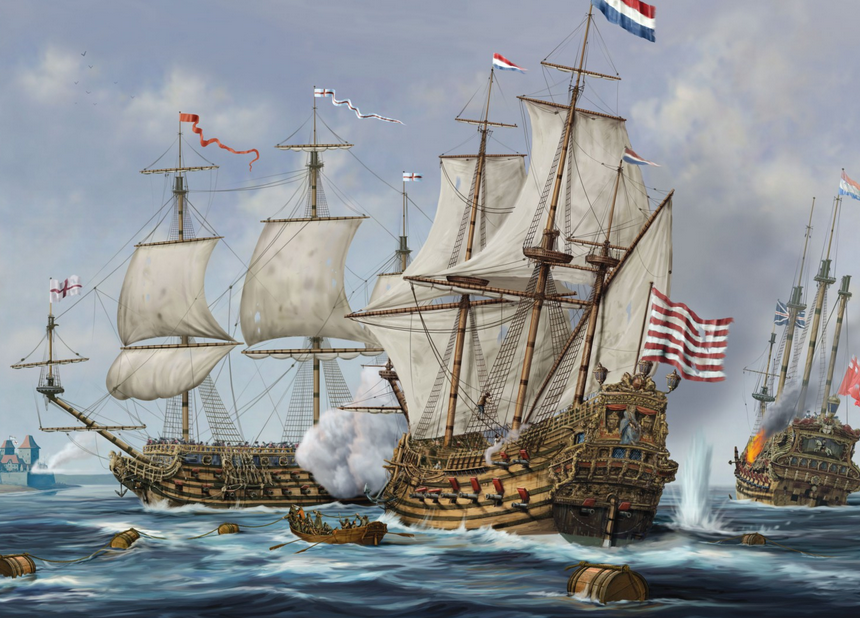Today marks the 350th birthday of the Royal Netherlands Marine Corps. Founded on 10 December 1665, the Korps Mariniers have gone onto serve as a rapidly-deployable expeditionary force across the globe, as well as providing the Dutch government's with its primary counter-terrorism force.
To commemorate the occasion we are looking back at one of their earliest engagements - the Raid on the Medway, also known as the Raid on Chatham.
Raid on the Medway, 1667
Extract taken from New Vanguard 183: Warships of the Anglo-Dutch Wars 1652–74 by Angus Konstam
The foundations for the spectacular Dutch raid on the main English fleet anchorage in the River Medway were laid by Charles II. The extravagant expenditure of the King and his court had all but bankrupted the country, and so to save money the bulk of the fleet was placed in reserve during 1667. Instead the English relied on their coastal defences to keep the enemy at bay. The Medway was actually poorly defended, with just one fort at Sheerness guarding the mouth of the river, and a boom and a handful of gun batteries protecting the main anchorage further upstream. On 10 June the Dutch stormed and captured the fort at Sheerness, and the following day the fleet entered the river. On the morning of 12 June they broke the boom and negotiated the line of hastily sunk blockships. The English fleet was trapped and helpless, and the following day the Dutch arrived off Chatham, and burned or forced aground several major warships before departing for Holland, with the captured Royal Charles in tow. It was a humiliating blow for the Restoration navy, and it forced Charles II to sign an unfavourable peace treaty with the victors. This plate shows the moment when the 36-gun Dutch warship Vrede from the Amsterdam Admiralty broke the boom. Beyond her lay the 42-gun Fourth Rate HMS Unity (formerly the Eendracht), which had been captured from the Dutch in 1665. The English warship was brushed aside, and forced to flee upriver to avoid the Dutch fireships that followed astern of the Vrede. She was captured the following day.


Comments
You must be logged in to comment on this post. Click here to log in.
Submit your comment